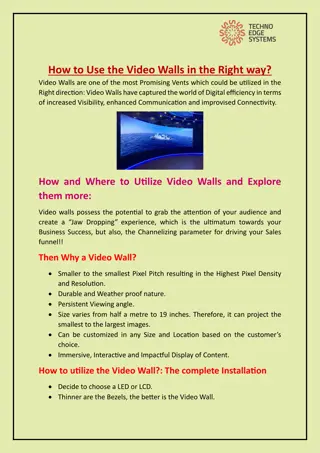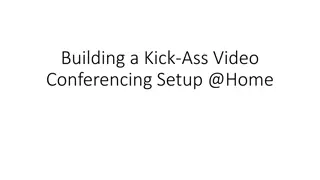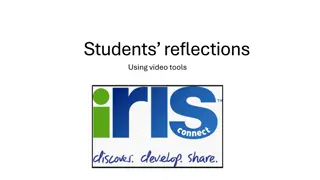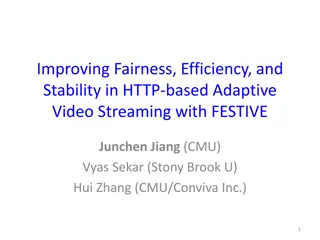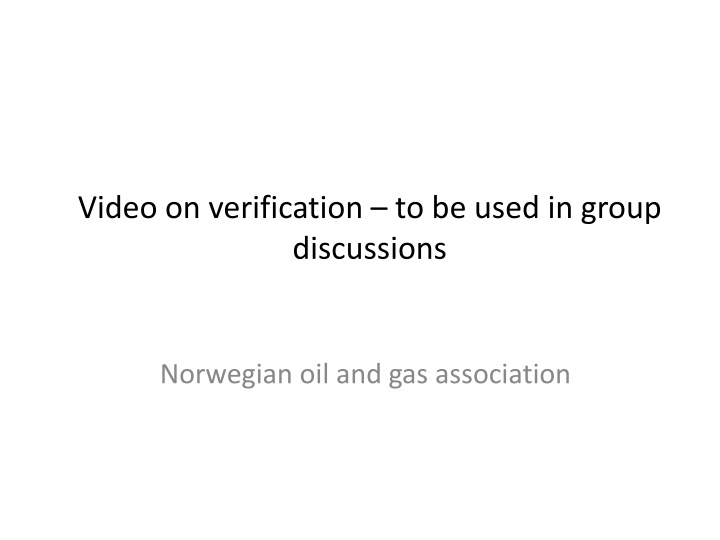
Preventing Hydrocarbon Leaks in Oil & Gas Industry
Learn about the causes and prevention of hydrocarbon leaks in the oil and gas industry, with a focus on human intervention, verification processes, and critical tasks. Explore real examples and important principles to enhance safety and minimize risks associated with hydrocarbon equipment.
Download Presentation

Please find below an Image/Link to download the presentation.
The content on the website is provided AS IS for your information and personal use only. It may not be sold, licensed, or shared on other websites without obtaining consent from the author. If you encounter any issues during the download, it is possible that the publisher has removed the file from their server.
You are allowed to download the files provided on this website for personal or commercial use, subject to the condition that they are used lawfully. All files are the property of their respective owners.
The content on the website is provided AS IS for your information and personal use only. It may not be sold, licensed, or shared on other websites without obtaining consent from the author.
E N D
Presentation Transcript
Video on verification to be used in group discussions Norwegian oil and gas association
Agenda 1. Hydrocarbon leak causes 2. Video on verification 3. Discussion in groups
Major accident example Piper Alpha accident in 1988: Leak (2 kg/s) ignition explosion fire 167 fatalities. Misunderstandings between day shift and night shift whether or not a job (PSV replacement) was initiated. Before After During
Hydrocarbon leaks categorization 1% Hydrocarbon leaks above 0.1 kg/s on the Norwegian continental shelf in 2008-2013 External load 11 % 1 % 25 % Design error Process disturbance Human intervention Technical degradation [n=62] 61 % Almost two out of three leaks were related to work on hydrocarbon equipment (pink sector) Most of this work was carried out in the operations phase (not during annual shutdowns)
Examples Flange bolts with wrong torque Opened the wrong valve Forgot to reinstate a plug Reinstated too early Used the wrong kind of gasket Worked on wrong (pressurised) equipment
Leaks related to human intervention on hydrocarbon equipment (pink sector) [n = 38, 2008-2013] 18 16 14 12 10 8 6 4 2 0 Error in isolation plan Error during isolation Error during the maintenance work Error during reinstatement Errors during isolation and reinstatement are important causes to hydrocarbon leaks!
Important principles to prevent such leaks Systematic use of isolation plan Verification of all critical tasks: One person performs and another person verifies
Video on verification The film is started by clicking one of the buttons below. Please note: - The computer must be connected to the internet - PowerPoint must be in presentation mode - The resolution can be adjusted by clicking settings in the lower right corner. Choose 1808p if you have a fast internet connection No subtext English subtext No English subtext subtext Both versions have Norwegian speech Link to Norwegian version and English version
Task 1 In which cases should isolation plan and verification be used? During isolation and reinstatement when a valve is removed and replaced? During certification of a PSV? When a pig is going to be launched?
Task 2 How should the verification be performed in practice? Should the verification always be performed in field? Can the person performing the isolation and the person performing the verification go together? How can we ensure the two roles are separated?
Task 3 Verification is required, but you are the only process operator on your shift. What do you do?
Task 4 Pilots use check lists before take-off even though they perform this work task several times every day. Why?
Summary In average there is one leak every 10thyear per platform on the Norwegian continental shelf (>0,1 kg/s). This equals one leak every 30thyear per shift. Hydrocarbon leaks can result in a major accident like on Piper Alpha. We have to do whatever we can to prevent such an accident. Everybody makes an error from time to time. At least in 30 years! This is why we need strict rules for the use of isolation plans and verification. You are the pilot offshore!
More information www.norskoljeoggass.no/hydrokarbonlekkasjer


